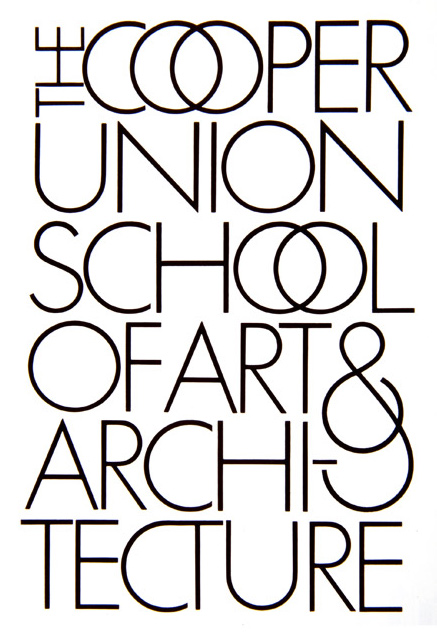
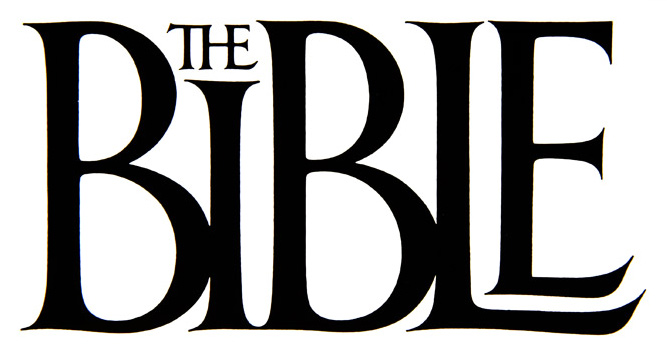
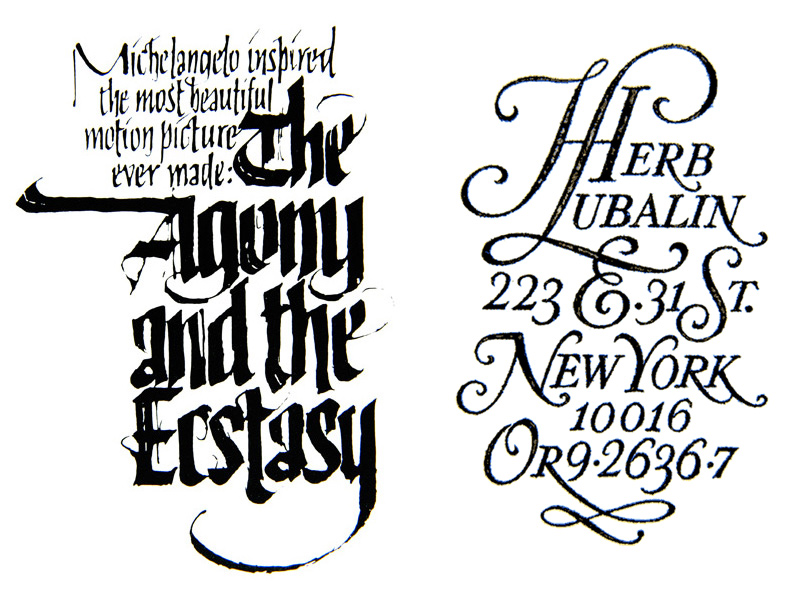
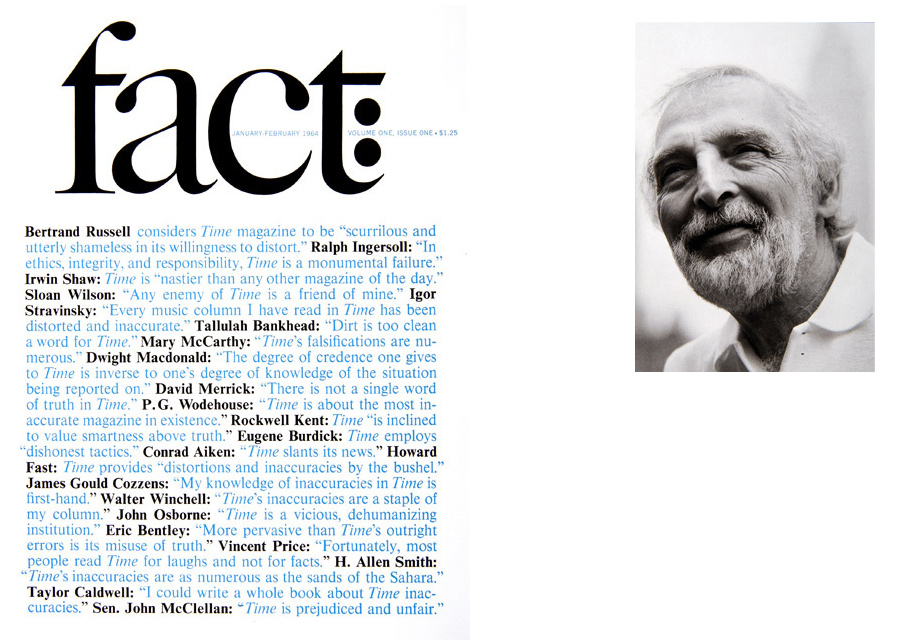

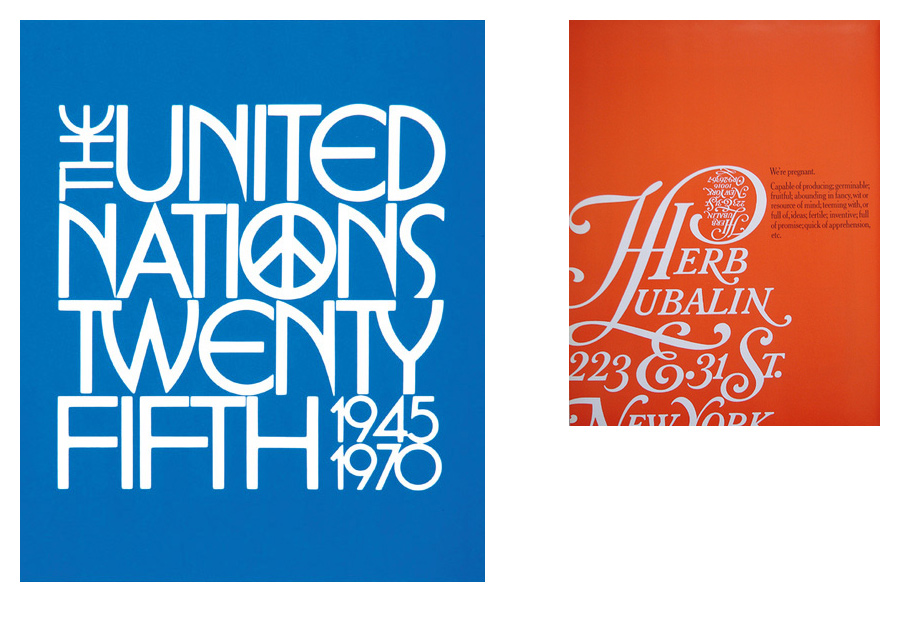
Herbert F. (Herb) Lubalin (1918 – May 24, 1981) was a prominent American graphic designer. He collaborated with Ralph Ginzburg on three of Ginzburg's magazines: Eros, Fact, and Avant Garde, and was responsible for the creative visual beauty of these publications. He designed a typeface, ITC Avant Garde, for the last of these; this distinctive font could be described as a post-modern interpretation of art deco, and its influence can be seen in logos created in the 1990s and 2000s. More...